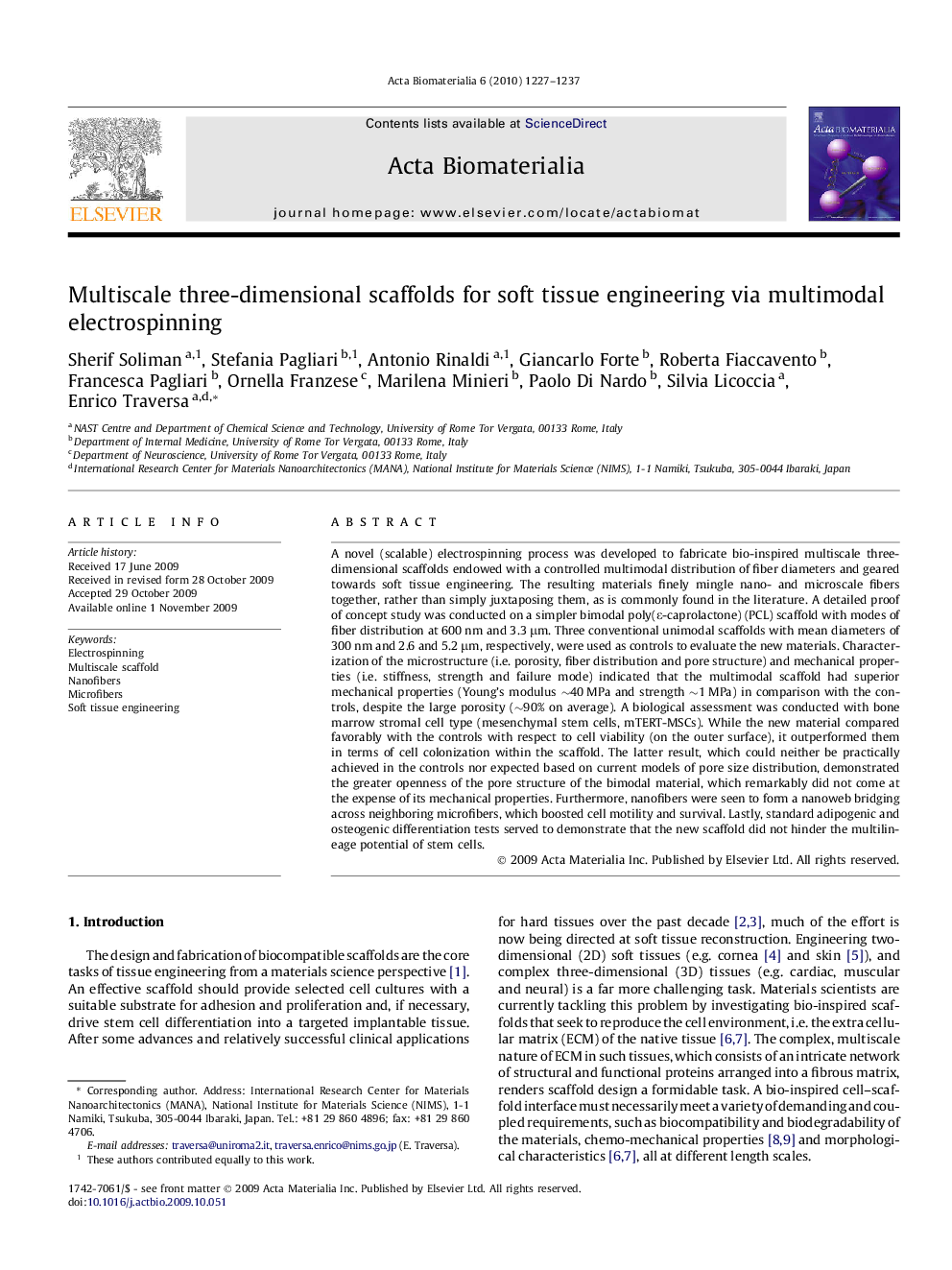| کد مقاله | کد نشریه | سال انتشار | مقاله انگلیسی | نسخه تمام متن |
|---|---|---|---|---|
| 2497 | 114 | 2010 | 11 صفحه PDF | دانلود رایگان |

A novel (scalable) electrospinning process was developed to fabricate bio-inspired multiscale three-dimensional scaffolds endowed with a controlled multimodal distribution of fiber diameters and geared towards soft tissue engineering. The resulting materials finely mingle nano- and microscale fibers together, rather than simply juxtaposing them, as is commonly found in the literature. A detailed proof of concept study was conducted on a simpler bimodal poly(ε-caprolactone) (PCL) scaffold with modes of fiber distribution at 600 nm and 3.3 μm. Three conventional unimodal scaffolds with mean diameters of 300 nm and 2.6 and 5.2 μm, respectively, were used as controls to evaluate the new materials. Characterization of the microstructure (i.e. porosity, fiber distribution and pore structure) and mechanical properties (i.e. stiffness, strength and failure mode) indicated that the multimodal scaffold had superior mechanical properties (Young’s modulus ∼40 MPa and strength ∼1 MPa) in comparison with the controls, despite the large porosity (∼90% on average). A biological assessment was conducted with bone marrow stromal cell type (mesenchymal stem cells, mTERT-MSCs). While the new material compared favorably with the controls with respect to cell viability (on the outer surface), it outperformed them in terms of cell colonization within the scaffold. The latter result, which could neither be practically achieved in the controls nor expected based on current models of pore size distribution, demonstrated the greater openness of the pore structure of the bimodal material, which remarkably did not come at the expense of its mechanical properties. Furthermore, nanofibers were seen to form a nanoweb bridging across neighboring microfibers, which boosted cell motility and survival. Lastly, standard adipogenic and osteogenic differentiation tests served to demonstrate that the new scaffold did not hinder the multilineage potential of stem cells.
Journal: Acta Biomaterialia - Volume 6, Issue 4, April 2010, Pages 1227–1237